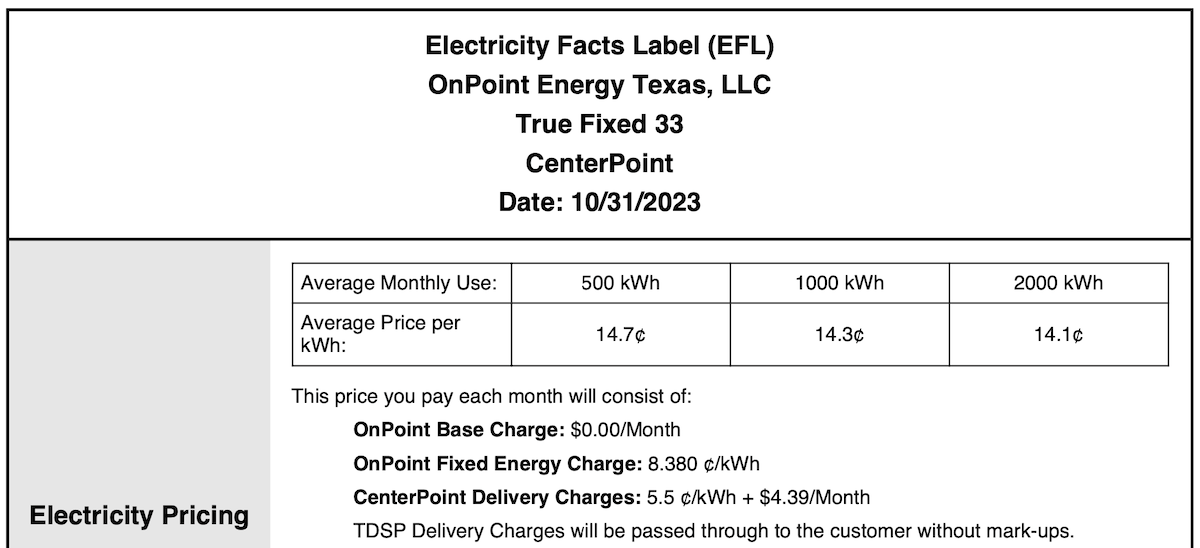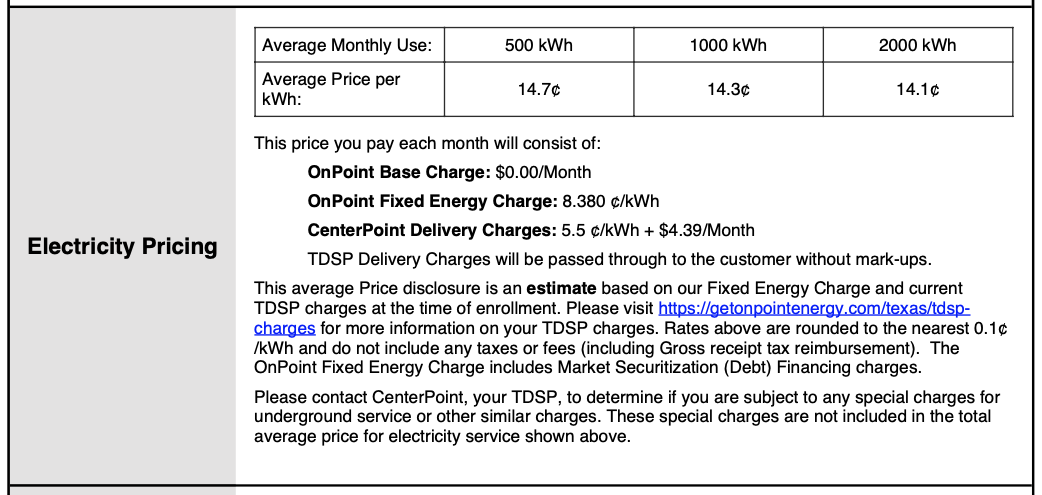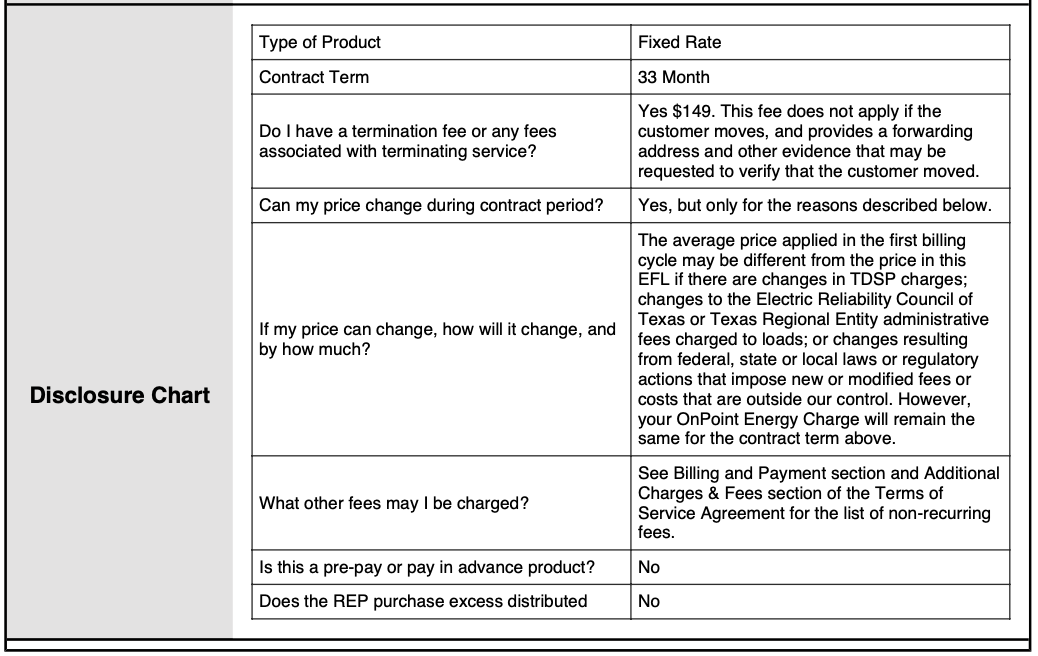
Texas offers a diverse selection of electricity plans, making it challenging to select the ideal one for your home or business. Fortunately, the Electricity Facts Label (EFL) was created to assist consumers in making well-informed decisions.
Understanding how to interpret and utilize the EFL is helpful to electricity customers in Texas. The label serves as a roadmap, guiding you through the intricate world of electricity plans. Whether you're a residential customer or a business owner, being well-informed about the EFL gives you the knowledge and tools necessary to make confident decisions about your electricity provider. Don't let the variety of options overwhelm you – let the Electricity Facts Label be your trusted companion on your journey to finding the ideal plan for your unique needs.
What is an Electricity Facts Label?
The Electricity Facts Label (EFL) is an invaluable resource specifically designed for energy consumers. Its main objective is to provide individuals with accessible and standardized information regarding the terms and conditions of electricity plans offered by different providers.
By presenting essential details such as the average price per kilowatt-hour (kWh), contract length, renewable energy content, early termination fees, and additional charges in a clear and concise format, the EFL empowers consumers to effectively compare various plans. This transparency enhances the electricity market, enabling customers to avoid unexpected or hidden costs, opt for environmentally friendly options, and ultimately select their electricity provider in Texas with confidence.
With the Electricity Facts Label, consumers can navigate the complex landscape of providers and their offerings without hassle. It puts the power back in their hands, allowing them to inquire and make informed choices that align with their values, budget, and long-term goals.
How Do I Read an Electricity Facts Label?
When it comes to understanding your electricity plan, there are a few key sections that are essential to pay attention to. Let's take a closer look at each of them.

The first section that deserves your attention is the Electricity Pricing. This is perhaps the most critical part for consumers, as it provides detailed information about the price you will pay for electricity. It includes the average price per kilowatt-hour (kWh), which covers all of your charges. It's important to note whether the rate is fixed or variable, as this can have a significant impact on your monthly bills. It's also worth checking if there are any introductory rates or promotional periods, so you can understand how the rates may change over time.

Moving on to the Other Key Terms and Questions section, here you'll find answers to common questions that consumers often have about their electricity plan. This section serves as a handy reference, providing explanations of terms and conditions, the provider's contact information, details about canceling the plan, and information on transferring service. It's designed to help you navigate your electricity plan with ease and find answers to any inquiries or clarifications you may need along the way.

Last but not least, the Disclosure Chart is a crucial part of the Electricity Facts Label (EFL). It offers a concise summary of the plan's key terms and conditions, making it easier for you to understand and compare with other electricity plans. The chart includes information such as the contract term length, average price per kWh, early termination fees, renewable energy content, and any additional fees or charges. By paying close attention to this section, you can ensure that the plan aligns with your preferences and requirements, making an informed decision.
Sections of Importance
When reviewing an Electricity Facts Label (EFL) to choose the right electricity plan, several important sections should be considered.
At the top, you will find the Electricity Provider Information. This section displays the name and contact details of the electricity provider. Make sure the information matches the plan you are considering.
Moving on, the Average Price per kWh is specified. It indicates the average price you will pay per kilowatt-hour (kWh) for your electricity usage, including energy charge (what your REP charges you) and TDU charge, if applicable. Pay attention to whether the rate is fixed, variable, or indexed, and if there are any introductory or promotional rates.

To determine if the plan aligns with your energy usage patterns, check the Average Monthly Usage section to know your average monthly energy consumption in kWh. It's important to consider your usage throughout different parts of the year and see if it falls under different categorizations, as it may impact your rate. You can usually find this information on your previous electricity bills.

The EFL also mentions the Term Length - the duration of the contract, which can vary from short-term plans (e.g., month-to-month) to long-term plans (e.g., 12, 24, or 36 months). Be aware of any early termination fees associated with longer-term contracts.

Speaking of early termination, understand the Early Termination Fee (ETF) if applicable. This section outlines the penalty you would incur if you terminate your contract before its scheduled end. This knowledge is vital should you anticipate moving or switching providers later on.

If you're environmentally conscious, pay attention to the Renewable Energy Content. Texas is a leading state in renewable energy, and many electricity plans offer a percentage of renewable energy sources like wind or solar. The EFL specifies the percentage of renewable content, allowing you to make sustainable choices.

To avoid unpleasant surprises, carefully review the Additional Fees and Charges section. It breaks down any extra fees such as late payment fees, connection fees, or charges for exceeding your monthly usage cap.
The EFL will typically include a link to the electricity provider's Terms of Service or contract documents. It's important to read and understand these terms thoroughly before committing to a plan.

Lastly, don't forget the Customer Service Contact Information. This label contains contact details for customer service, including phone numbers and website URLs. Ensuring easy access to your provider in case of issues or inquiries is a smart practice.
Why is the EFL Important?
By understanding what an EFL is, you can make wiser decisions when selecting an electric plan. At OnPoint, we focus on transparency and empowering our customers to choose their best energy options. Our EFL clearly explains all of the associated fees, terms, and conditions, so make sure to check out our label with confidence. In conclusion, with the electricity facts label, you can have a better understanding of the energy plan’s true cost and avoid being faced with unexpected fees or hidden expenses. It’ll make it easier for you to decide which electricity provider or plan fits your needs in terms of pricing, term lengths, charges, and usage rates!